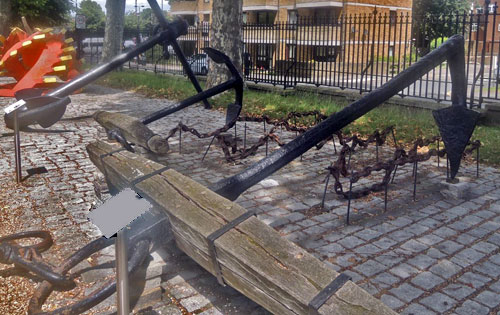Form follows function!
Here is a row of anchors, which I photographed in Greenwich in the UK. You’ll note the one in the foreground has a single fluke (as the pointy ends of an anchor are called). The sign says this anchor is from around 1820.
So why would they produce an anchor with only one fluke, when most of them have two? For a very good reason.
This model was used in permanent ship moorings in shallow waters. Think of the ship floating above the anchor. Think of the falling tide. Think what will happen if the ships comes down too close to an upward-pointing fluke…
That’s why!


Leave a Reply